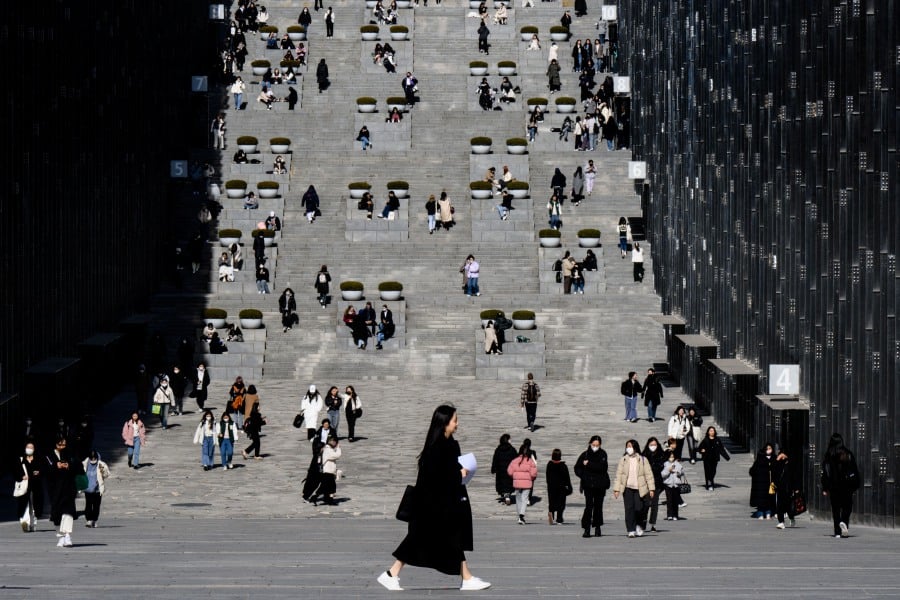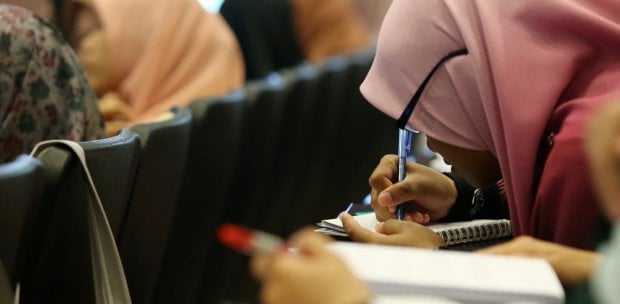DESPITE criticism, most universities are aiming for a spot in the World University Rankings.
The most common university rankings include Quacquarelli Symonds (QS), Times Higher Education (THE), and the Academic Ranking of World Universities (ARWU).
With some varying indicators, these ranking bodies primarily measure the impact, reputation, and research performance of universities.
An independent expert group convened by the United Nations University's International Institute for Global Health has advocated for alternative approaches to assess and describe the distinctive attributes of various universities.
Candidly speaking, it is unacceptable if those rankings are used merely for "branding" while ignoring the importance and impact of the highest seats of learning in fostering knowledge and wisdom.
Rightly so, Harry Lewis, a Harvard professor for more than 30 years and Dean of Harvard College in his "In Excellence Without a Soul", explained how the great universities of the USA have abandoned their mission.
However, the "narrow or shallow" view of ranking seems to have advantages. On one hand, the scores could be meaningfully used by each institution to plan further improvement. On the other hand, it could be used to reveal if the sky's the limit for a university as long as rankings are given importance.
Hence, despite the non-stop censure on the methodological riddle of using those rankings, they are used to encourage or force academic institutions to secure a higher position in the rankings.
At the bottom of the chain — academicians are inspired (read forced) to increase their 'academic productivity' often resulting in a compromise with the integrity of research and publications to secure a position in the ranking.
The pertinent question for all universities is then to critically evaluate the need and possible end-game in participating in the ranking race.
Let's take a deeper look at the positions of the top 10 universities in the world and that of five Malaysian research universities in the last five years. The 20th edition (2024) of the QS World University Rankings features 1,500 institutions across 104 locations. Meanwhile, THE World University Rankings 2024 includes 1,904 universities across 108 countries and regions.
Clearly with minor changes in their order of appearances, the top universities remain at the top of the list for many years. With a few exceptions, positions of Malaysian research universities also do not show any significant shift in their positions on the list.
In fact, academic and research institutions have always been ranked. Naming the best university in the world — be it the Massachusetts Institute of Technology, Harvard, Oxford, or Cambridge – was never in doubt, with or without the QS or THE World University Rankings.
Those ranking authorities use more or less similar quantitative indicators: reputation in teaching, staff (academic) -student ratio, doctoral-bachelor student ratio, number and citation counts of papers published by the staff, the proportion of international staff and students, research publications, international collaboration, and knowledge transfer for industrial or societal application.
No matter how those indicators are calculated, some universities will be at the top of the list. While many universities are racing to reach the top 50 or 100 of the lists, inescapably, only a few will reach the goal.
Chasing the ranking game begs the question as to whether any university will have the chance to replace the current top 5 or top 10 ranked universities?
Given the location and policy, a given university may have an inherent advantage to score high in some of the indicators, while others lack that inherent blessing.
Given the national policy in many countries including Malaysia, postgraduates immediately after their MSc (Master of Science) are allowed to teach undergraduate courses.
A university where a fresh graduate immediately after their MSc is recruited to deliver lectures for undergraduate courses will suffer a low score in reputation for teaching as well as doctoral-bachelor student ratio compared to those where teaching undergraduate courses would require at least a three-year, post-doctoral training or experience.
Naturally, scores for those indicators would favour the latter groups of universities. Similarly, given the demographic reality, universities in many countries do not have the luxury of recruiting foreign experts.
Hence, they suffer a lower score for the indicator "proportion of international staff and students". No matter how hard those universities try, it will be an unrealistic dream to keep pace with Harvard, Oxford and many other universities that belong to nations with efficient policies for inviting and facilitating skilled immigrants.
For a similar reason, talented students from all over the world prefer to join universities in countries with favourable immigration policies. These talented foreign students make significant contributions to the research and development of those universities.
This simplified reality is not true for some countries with a huge population such as India and China. This is possibly one of the reasons why many universities in India and China were able to find their spots at the top of the list of Asian universities.
Therefore, the universities that are missing their scores in those indicators are heavily dependent on research output by their faculty members. The easy way out is to make the faculty members secure more research grants.
In fact, the nature and volume of research grants can influence major THE ranking indicators: publications, citations, research income, research collaboration, and industry income (knowledge transfer).
Generally speaking, bigger research grants are expected to make impactful publications that in turn give higher citations. The same also adds to the research income indicator.
Research grants from industrial partners would reflect a university's ability to help industries with innovations, inventions and consultancy. In turn, that reflects a university's ability to attract funding in the commercial marketplace.
In the triangle of grants-research-publications, the challenge is not in finding the right candidates such as research assistants or postgraduate students but in securing international or industrial grants in the face of the global economic downfall, as cautioned both by the International Monetary Fund and the World Bank.
While facing the short supply of international students, a lack of self-funded postgraduate students and a postdoctoral research culture are also greatly insignificant in many universities, including research universities in Malaysia.
Hence, it is difficult to cope with the race for ranking with their counterparts in the US and the UK. Practically speaking, the majority of postdoctoral researchers who often act as the centre of dynamic research culture in a laboratory would prefer to pursue their careers in a country where they are likely to achieve their life-long plans.
Needless to say, these concerns make it difficult for universities in many countries, including Malaysia, to move forward in the list of World University Rankings.
That means top positions in the ranking will not shift from where they are now. In other words, there will be no parallel to Oxford or Harvard elsewhere, as long as the rankings are concerned.
End note: Every nation has its own strengths and limitations based on socioeconomic and geo-political backgrounds. Like in any other sector, advancing strategies for universities should then also be based on their own strengths rather than following what others are doing elsewhere.
The writer is Associate Dean (Continuing Education), Faculty of Dentistry, and Associate Member, UM LEAD (Centre for Leadership and Professional Development), University of Malaya. He may be reached at [email protected]





